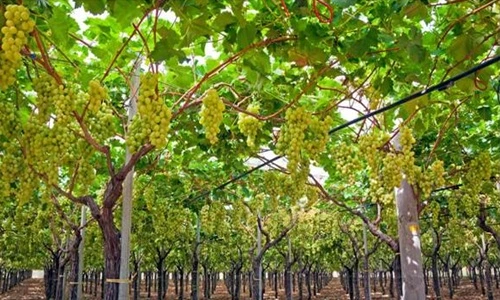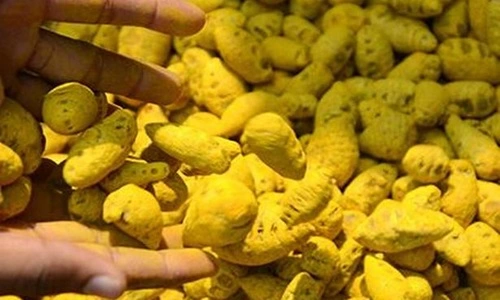You see, India ranks 7th among the top grapes-producing countries in the world as of 2024. In India, grapes are mainly considered delicious fruits, but there is a huge demand for this fruit because of winemaking. There are some specific types of grapes from specific regions that are of the highest quality and are always in high demand. Today, we will be talking about the top 5 most grapes-producing states in India as of 2024, and you’ll know where most of these grapes come from, and which are the prime regions of these states where the highest quality grapes are grown. Here we go.

1. Maharashtra
Maharashtra tops the list as the highest grape-producing state in India, with an unbelievable 70.67% of the total grape production in the country. In the latest agricultural cycle, approximately 2,466,290 tonnes of grapes were produced by this state. Key grape-growing centres in Maharashtra include Nashik, Sangli, and Solapur. Nashik is also termed the “Wine Capital of India” because of the superior class of grapes, served for eating and making wine. The secret behind the success of Maharashtra grapes is the ideal climate, rich lands, and careful vineyard management.
2. Karnataka
Standing in the second position is the state of Karnataka, which contributes an estimated 24.49% to India’s grape production, producing a total of 854,600 tonnes. The leading grape production centers in Karnataka include Bijapur, Bagalkot, and Gulbarga. Karnataka is known for its exotic varieties of grapes, such as Bangalore Blue, Dilkhush, and Thomson Seedless. Again, the climate of the state is a perfect match for grape cultivation; likewise, the state harbours a number of big wineries, such as Grover Zampa, Alpine, and Kinvah vineyards.
3. Tamil Nadu
Tamil Nadu ranks third in grape production in India, producing around 50,010 tonnes, amounting to around 1.43% of the country’s total grape production. Cumbum Valley along with Krishnagiri and Dharmapuri districts forms the core centers of grape cultivation in Tamil Nadu. Again, the major varieties grown in the vineyards of Tamil Nadu are Thompson Seedless, Muscat, and Anab-e-Shahi. And just like the top states on this list, Tamil Nadu also favours grape production because of the warm climate and suitable irrigation.
4. Andhra Pradesh
Andhra Pradesh stands fourth and produces around 46,820 tonnes of grapes. Here, the major grape-growing regions are Chittoor and Anantapur. The state is a leading one in the cultivation of different types of grape varieties, that is, Thompson Seedless, Tas-A-Ganesh, and Bangalore Blue. Due to the variation in the climate and the differentiation in the types of soil, the quality of grapes produced in Andhra Pradesh is of superior quality and is best suited for the table as well as regular wine production.
5. Mizoram
Grape cultivation in Mizo Hills is especially famous in Hnahlan village, with an annual production of about 17,300 tonnes. There are some special climatic conditions and topography in the state which offer ideal conditions for the cultivation of high-class table grapes. With the support of government intervention, the grape yield of the farmers of the state has increased considerably, and thus the state has turned into an emerging or rising player in the grape industry of the country.
FAQs
Q1. What varieties of grapes are predominantly grown in India?
Ans: Over 20 grape varieties are grown in the country, of which Thompson Seedless is the topmost popular type, also known as Sultan. Other important types are Bangalore Blue, Anab-e-Shahi, Dilkhush, and Tas-A-Ganesh, each of which serves diverse purposes, right from table usage to wine.
Q2. What climatic conditions are ideal for grape cultivation in India?
Ans: Grapes must be grown in hot, dry conditions at an altitude of not less than 250 meters above sea level. Nashik in Maharashtra provides the perfect example.
Q3. What are the common pests and diseases affecting grape vines in India?
Ans: The main pests are flea beetles, thrips, mealybugs, and leafhoppers, while powdery mildew and anthracnose are the most common diseases.
Q4. How does India ensure the safety and quality of its grape exports?
Ans: India uses modern packhouses with automated pre-cooling and traceability systems. A residue monitoring plan ensures pesticide levels meet international standards, ensuring safe and quality exports.
Q5. What markets are emerging for Indian grape exports?
Ans: Indian grapes are getting popular in countries like Canada and China, so with improved quality of production, global demand is also on the rise.

